

| Circe
| Friday, November 6, 2009 For a variety of reasons, during my earlier sanding/preparation blitzes, I'd not addressed the lazarette. It somehow seemed to be the day to remove the paint, sand, and clean up this space so that it would be ready for any and all further projects that might involve the area. I cut off the remains of the old fiberglass exhaust tube (which I'd already patched from outside), and then sanded the locker to remove old paint and prepare it for new. After cleaning up, I applied a coat of gray Bilgekote to match the other lockers. |
|
Similarly, I prepared other lockers in the interior for paint--lockers that would soon be covered and less accessible, such as the two head vanity spaces and the locker beneath the galley sink. I left the future icebox space unpainted since the icebox installation might require a clean bonding surface for epoxy and/or foam. |

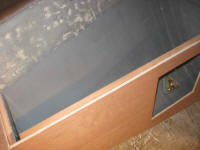
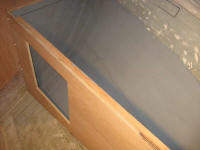 |
|
Work on the icebox itself was nearly done. I sanded the fairing compound that I'd applied the other day and deemed the interior smooth enough to proceed. After a mid-day break for an appointment, I cleaned up the icebox and applied a final coat of unthickened epoxy to seal, this time colored with white pigment to provide a better base for the icebox's final paint later. |
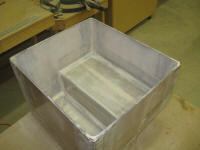
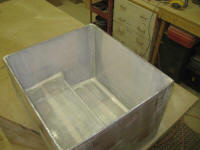 |
|
I had hoped to begin cutting cherry panels to cover various bulkheads, but realized that I had some other chores to attend to first in order to avoid damage to the finished wood, or at least to make the process easier and avoid the need for undue protective measures. Specifically, there was the problem of the overhead in the forward part of the main cabin--what used to be the head. This area contained no smooth interior liner, so I needed to smooth the surface enough for painting in an acceptable manner so it could tie in reasonably well with the molded liner in the after portion of the cabin. Attempting to truly fair the surface to match the adjacent liner would be a fool's errand, but it wouldn't take much to smooth it out and provide a clean, consistent base, free from roughness and depressions. The transition between the two areas could be effectively hidden with trim later. I solvent-washed the bare fiberglass and applied a skim coat of smooth fairing compound as a starting point, and left it to cure. (Later, I'd repeat this basic process up in the head as well.) |
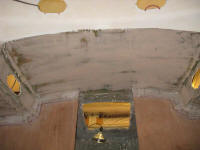 |
|